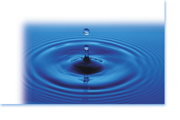
Moisture meters
Some people think that moisture meters are a "must have" gadget for solving leak problems. True, they are handy, but keep in mind that what they tell you is that the wall is wet and not how it got that way. The key benefit of the couple hundred dollars you pay for a moisture meter is not having to tear off the EIFS in order to see if the wall is wet. This alone makes them worth the cost.There are two basic types of meters: those with pins that you shove into the test material ("pin meters") and those that are moved across the surface of an EIFS, much like a clothes iron ("scanning meters"). Pin meters give an actual moisture percentage reading. They need to be used with care because they do not work on all types of materials. For example, they aren't much good with insulation but do work on wood products. Most pin-style meters have short pins that stick out of the meter's housing. For EIFS, you'll need a meter that has a cable with a remote set of long pins.
The long pins are needed in order to go through the EIFS insulation and into the substrate. Holes need to be punched through the EIFS lamina in order to insert the pins into the wall. A hammer and nail set work well for this. If you try to shove the pins through the EIFS lamina, you'll stand a good change of bending the pins. Pin meters leave holes in the EIFS lamina that can be plugged with caulking.
Scanning meters give a relative reading of the moisture level in the wall from one region to another, not any actual percentage. However, they also pick up pipes, brackets, conduits and other conductive materials. Scanning meters do not harm the EIFS at all and are useful for getting a basic idea of where the damp areas are. Then the pin-type meter can be used to get detailed readings. Scanning type meters should be used when the EIFS lamina is dry, otherwise it'll indicate that the wall is wetter than it is. This means waiting until morning dew evaporates, or until rain water dries off. Some of the small, pocket-size scanning meters do not work well with EIFS. They are intended to be used to look for dampness behind paint films and thin materials like vinyl wall coverings. A more robust unit, such as the Tramex brand "Wet Wall" meter has enough guts to push its electronic signal through the thick insulation layer of an EIFS, so that it can read what's happening back inside the wall near the studs and sheathing.
The field vs. the edges
The middle of an EIFS wall rarely leaks; the EIFS lamina sheds water. Your time is usually much better spent looking around the edges, where the EIFS terminates. However, it is possible for the EIFS lamina to leak. This can be caused by improper mixing, improper application technique, or improper curing conditions. This can lead to a lamina that is porous. Remember that it is the EIFS basecoat that keeps the water out of the wall, not the EIFS finish.Sure, the finish adds another layer of protection, but a properly installed basecoat alone should keep the water out too. If the lamina is leaking, it can be sealed by applying a coating to the EIFS finish. Be sure to use a coating that is breathable, otherwise condensation may be induced, further complicating the drying problem. Check with the EIFS manufacturer for details on what products to use to do this type of repair.
Don't forget that if the EIFS lamina is leaking, it is possible that the EIFS insulation may also be wet.
Wet insulation can also be caused from water getting to the insulation from the substrate side. Wetness not only reduces the insulation's energy efficiency, it also can lead to other problems, such as reducing the attachment strength of the EIFS to the wall.
Regardless of how the insulation got wet, it does not want to dry easy; it is bounded on both sides by solid materials and ventilation is minimal. Thus, putting a sealer on top of the EIFS finish when the insulation is wet just makes things worse. Even though water will not be able to get through from the outside, it will also have trouble drying out. The dampness of the insulation can be checked by taking core samples with a hole saw, or cutting away a chunk of the EIFS and determining it moisture content. Wet insulation is a complicated situation and requires professional help.
Sealant adhesion. Sealants should be bonded to the EIFS basecoat and not to the EIFS finish. It is possible for some sealants to get an adequate bond to the EIFS finish, but its much safer to bond directly to the basecoat. The basecoat, with the reinforcing mesh, should be brought around the edge of the EIFS to strength and seal the edge. Trying to bond the sealant to a raw edge of EIFS insulation does not work.
Where EIFS meets adjacent materials
It is not enough to simply butt the EIFS up against an adjacent material such as a window and expect it to be watertight. The interface needs to be sealed. The best joint geometry, in terms of the forces applied to the sealant, is where the adjacent sides of the joint face each other. It is also possible to effectively seal joints where the EIFS meets another material at a right angle. These are called fillet joints. Sealant joints need to be properly sized to accommodate movement, with special attention given on fillet joints to ensure that the sealant-at the point where the two surfaces intersect-is not bonded. If bonding occurs in this area, the sealant may split in the middle of the sealant bead. Creating the non-bonded area can be accomplished using a bond breaker tape or a backer rod.Primers. Many EIFS manufacturers and sealant producers want you to use a primer, applied to the EIFS basecoat prior to applying the sealant. Primers enhance adhesive, especially when the lamina gets wet. Keep in mind that a different primer may be needed on the non-EIFS side of the sealant joint. This could happen, for instance, when a window frame has a fluorocarbon finish. Fluorocarbon paints are a type of coating that few sealants adhere well, without a special primer.
Weeps. When sealants-with or without flashings-are used to waterproof an opening, it helps if a path is created whereby water that gets behind the sealant bead can get out of the wall past the sealant. Weep holes can be created for this purpose by leaving small, periodic gaps in the sealant bead.
Overlaps. Flashings need to overlap the EIFS enough so that water can not get blown up underneath. This is especially true if the bottom edge of the flashing is not sealed with caulking. The amount of overlap that is needed depends on the building's exposure; parapet caps on a building at a wind blown ocean setting need more overlap than protected areas at the base of the wall.
Slopes. Using EIFS on large, low slope areas is a bad idea. Such areas should be covered with flashings. Keep in mind that standing water on nearly flat EIFS surfaces can sometimes migrate through the EIFS and ruin the framing and sheathing below it. Low slope surfaces also collect dirt, which tends to get bound into the surface of the EIFS finish. This not only looks lousy but is hard to remove. If the owner or architect is absolutely adamant about having low slope EIFS surfaces, such as at balcony wall tops and parapets, it can help somewhat to build up a multi-layer basecoat and to seal the surface of the EIFS finish with multiple layers of a hard clear sealer.
The most common leak area
In my experience, most of the really bad leaks occur at sill-jamb intersection of large openings. Windows are the most common leak area, as are wood deck beam penetrations. Usually, the damage is confined to the area where the water is getting in. It usually migrates downward and sideways, in a triangular pattern.Mold. If you're suspicious that the wall may be moldy inside, but you don't want to, or cannot easily tear off the drywall inside to find out, you can often do sampling from the outside. One sample technique is to use a special bottle that is evacuated. A valve at the top of the bottom is connected to a tube or hose. A hole is bored though the EIFS, and the hose is fed into the cavity. The valve is opened, and the air from the cavity is sucked into the bottle. The valve is then closed, and the bottle, with the air sample inside, is sent to a lab for analysis. If there is mold in the wall, often there are spores in the air, which can be detected by testing. This technique can also be done from indoors.
Digital Camera. The availability of high resolution, affordable digital cameras is a real boon in doing field investigations. For several hundred dollars, one can now buy one that take dozens of detailed shots. In particular, you can crop and enlarge your photos, as well as add notes and arrows and other information using inexpensive, easy-to-use software packages such as Paint Shop Pro or Picture Publisher. You can also send your photos to friends via the Internet as an e-mail attachment. You'll want a camera that does at least 1024x768 pixels, has a built-in flash, and the ability to zoom in for very close ("macro") photos.
Successful leak seeking is not really that difficult. The real trick is to be methodical and not to assume anything. For example, look very carefully at all parts of the wall. Don't assume that what's causing the leak on one side of the building is the same on the other side. It's also important to make sure that all leak sources are located, because fixing only one of a number of leak sources will not solve the problem; you'll get called back to explain, "Why is it still leaking?" Lastly, remember that wetness in a wall can also be caused from sources other than leaks of liquid water from precipitation. Condensation from water vapor migrating through the wall can also deposit water in a wall, leading to the same sorts of problems that occur from "real" leaks. W&C
The Robert Thomas who writes this column is not the same Bob Thomas who works for the EIFS company Finestone, as read in the Trade News, June 2002, W&C.






